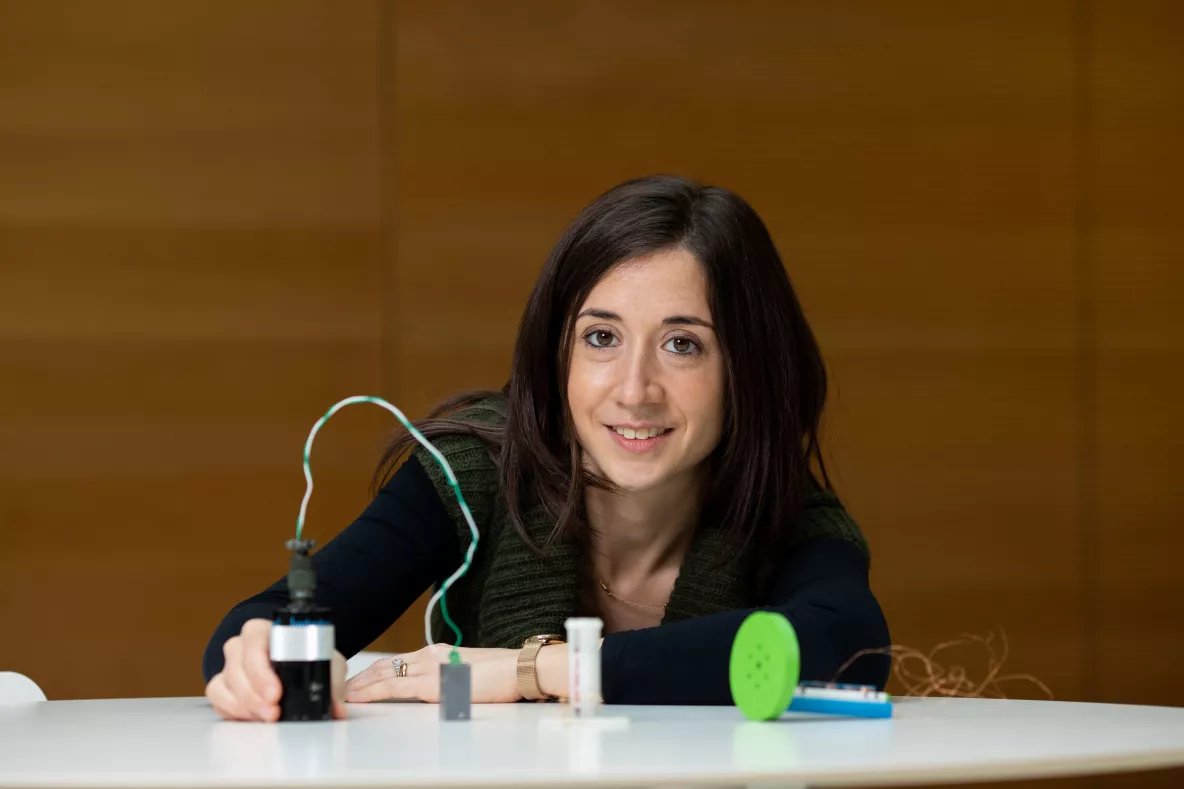
Principal Investigator in the Bernal Institute and associate professor in the School of Engineering at the University of Limerick, Dr Valeria Nico recalls being fascinated by “how everyday things work”, even in early childhood.
Her mother, a physics teacher, encouraged her to embrace science and the two would spend afternoons in her school lab, working on experiments, and for Nico, laying down the foundations for what would become a lifelong love of lab work and research.
Nico’s area of expertise is in the powering of small electronic devices, without using traditional batteries, but instead using vibrational energy harvesting, that is the creation of energy by converting mechanical vibrations into electricity.
“One of the experiments I loved when I was a kid was using potatoes to power a Casio watch because it showed me that it is possible to power small things without traditional batteries,” Nico told SiliconRepublic.com.
“This has influenced my academic career to date, as my core research area is vibrational energy harvesting – powering small electronics devices sustainably from ambient vibrations.”
Sustainability
Nico’s work is heavily influenced by the “growing imperative to provide sustainable power to autonomous sensor nodes for internet of things (IoT) applications”. Her goal is to create a first-of-its-kind vibrational energy harvester that can convert multidirectional vibrations to maximise generated power.
IoT nodes are devices that establish connectivity to the internet via a gateway, enabling a bridge between physical and virtual worlds. Currently, the majority of IoT nodes are battery powered, with research from the WEE Ireland Annual Environmental Report 2022 showing less than half (46pc) of the portable batteries placed on the market were collected for recycling.
“Battery replacement is a significant environmental hazard if batteries are not properly discarded and recycled.” The production of batteries is also problematic, as it can have a detrimental effect on the environment.
“Raw materials that form the batteries, such as lithium, zinc and manganese, are generally mined and during their extraction large quantities of metal are released into the surrounding environment in the form of fine-grained by-products known as tailings,” explained Nico.
This poses a significant pollution risk to soil, ground and surface waters in the form of leachates, surface run-off and dusting. Reducing the consumption of batteries should ultimately help curtail the consequences of tailing-related pollution and diminish the need for the mining of heavy metals.
“By providing an alternative to batteries for IoT applications, I am seeking to reduce a significant environmental hazard, ultimately helping to reduce soil pollution and chemical and electronic waste in Ireland and Europe,” she said, further noting that this is in line with the UN Sustainable Development Goal 12 and the Science Foundation Ireland strategic plan for 2025 to tackle the climate emergency.
Scaling barriers
As with all professions, there are barriers to success, however working in STEM offers people a unique opportunity to problem-solve and create the solutions to the issues they face.
Take for example, academia, where financial resources can be limited and “researchers have to be strategic and innovative when it comes to equipment”, Nico says.
“During one project in particular, I had to study the reliability of a small microfluidic pump I developed and this involved measuring the flow rate generated by multiple individual units,” Nico explains. As flow metres for microfluidic applications are expensive and Nico’s budget fell short, she had to generate a cost-effective solution using items available to her in the lab. “This led to the invention of a novel type of flow metre and the technology is currently under patent application.”
Nico explains that previous academic research around energy harvesting technologies have struggled to translate to commercial or industrial applications, with the technologies considered to be an unreliable, inconvenient alternative to batteries.
But there has been a positive shift in recent years. Nico has noticed an increase in the implementation of energy harvesters in real commercial applications. Particularly she notes in Ireland, through the SFI Connect Centre for Future Networks and Communications, which hosts the world’s first energy harvesting testbed for IoT applications and where Nico leads the activities on vibrational energy harvesting.
“This allows academic researchers and industry to join efforts to develop self-powered autonomous sensors, from proof-of-concept all the way up to commercial products."
“As a researcher, being able to be part of the testbed is quite rewarding, as I can see how my novel ideas can be translated into commercial products.”
Forecast
A Statista report suggests that by 2030, globally there will be in excess of 30bn IoT devices, potentially requiring billions of batteries to power these models.
For Nico, it is imperative that we address the carbon footprint and sustainability of the sensors we are using and it is her hope that in the future “IoT sensors will all be self-powered using ambient energy (whether it is from solar, thermal, mechanical, or electromagnetic radiation) and be made of sustainable materials to minimise their environmental impact”.
“I also envisage that in the future we will be able to reconfigure our sensor nodes to a second different application when we will not need them anymore, in order to ultimately minimise our electronic waste.”